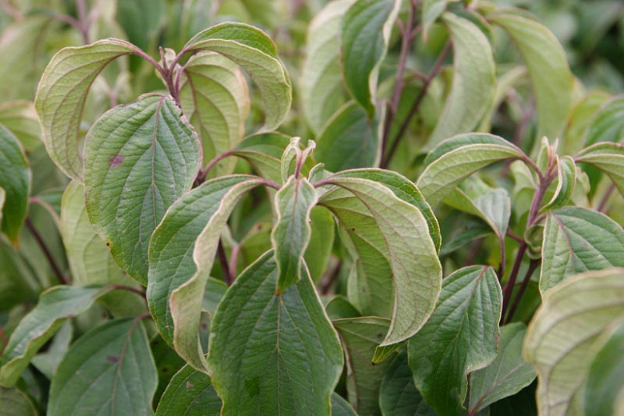

Redtwig Dogwood Kelseyi, Kelseyi Redosier Dogwood, Cornus 'Kelsey Dwarf', Cornus sericea 'Kelsey's Dwarf', Cornus stolonifera 'Kelseyi'
Perfect for small gardens, Cornus sericea 'Kelseyi' (Redtwig Dogwood) is a dwarf, rounded, suckering, deciduous shrub of great ornamental value in the landscape. Fast-growing, adaptable to most soils including wet soils, it bears a dense foliage of ovate green leaves in spring and summer, creating a nice contrast with the reddish stems. The foliage turns attractive shades of burgundy-red in the fall, before falling to the ground, revealing the vibrant, glistening, red stems. Small clusters of tiny white flowers are rarely produced in late spring. An invaluable addition to the winter garden. Cornus sericea 'Kelseyi' can be used as a coarse groundcover or in a shrub border.
| Requirement | |
|---|---|
| Hardiness | 3,4,5,6,7,8 |
| Heat Zones | 1,2,3,4,5,6,7,8 |
| Climate Zones | 4, 5, 6, 7, 8, 9, 14, 15, 16, 17, 18, 19, 20, 21, A1, 1B, 2A, 2B, 3A, A2, A3, 1A, 3B |
| Plant Type | Shrubs |
| Plant Family | Cornaceae |
| Exposure | Full Sun, Partial Sun |
| Season of Interest | Spring, Summer, Fall, Early Spring, Mid Spring, Late Spring, Early Summer, Mid Summer, Late Summer |
| Height | 2' - 3' |
| Spread | 2' - 3' |
| Water Needs | Average |
| Maintenance | Low |
| Soil Type | Chalk, Clay, Loam, Sand |
| Characteristics | Showy |
| Garden Styles | City and Courtyard, Informal and Cottage, Traditional Garden |
| Planting Place | Banks and Slopes, Beds and Borders, Ground Covers, Ponds and Streams, Rain Gardens, Small Gardens |